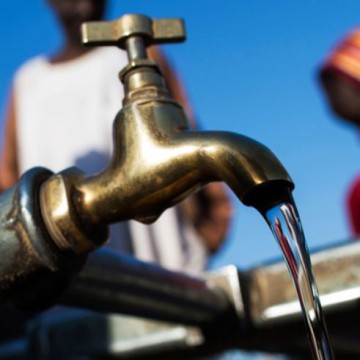7 Strategies for Reducing Water Waste in the Food System
07-30-2017
March 22, 2013 is the 20th anniversary of World Water Day. In honor of this important anniversary, this week we are highlighting 7 Strategies for Reducing Water Waste. Please visit the Food Tank website each day over the next week for posts focused on innovations around water.
Although the earth has 1.4 billion cubic kilometers of water, only 0.001 percent of that is accessible for human consumption and use. And 70 percent of water is used for agricultural purposes. In 2012, the United States experienced the most severe drought in at least 25 years which, according to the U.S. Department of Agriculture (USDA), affected 80 percent of agricultural land in the country. Couple that with recent droughts in other parts of the world, most notably in the African Sahel, and the urgency for action to safeguard water resources is clear.
As water supplies face mounting pressures from growing populations, climate change, and an already troubled food system, analyses of “water wealth” and “water security” are laying the groundwork for future cooperation and stability. In order to meet all municipal, agricultural, and ecological needs for water, it is crucial to develop innovative water saving systems for the future of food production.
Here are seven strategies for reducing water waste in the food system:
1. Eating Less Meat
According to Sandra Postel of the Global Water Policy Project, it takes roughly 3,000 liters of water to meet one person’s daily dietary needs, or approximately 1 liter per calorie. The amount of water needed to produce one kilogram of red meat can range from 13,000 to 43,000 liters of water; poultry requires about 3,500 liters of water; and pork needs about 6,000 liters. Eating more meatless meals, even one or two days a week, can help conserve water resources.
2. Using intercropping, agroforestry, and cover crops
Soil health is critical to water conservation. Diversifying farms by including cover crops, planting trees on farms, and intercropping can help keep nutrients and water in the soil, protecting plants from drought and making sure that every drop of water delivered by rainfall or irrigation can be utilized.
3. Implementing micro-irrigation
Approximately 60 percent of water used for irrigation is wasted. Drip irrigation methods can be more expensive to install, but can also be 33 percent to 40 percent more efficient, carrying water or fertilizers directly to plants’ roots.
4. Improving Rainwater Harvesting
Since the 1980s, according to the International Food Policy Research Institute, farmers in Burkina Faso have been modifying traditional planting pits known as zai, making them deeper and wider and adding organic materials. As a result, the pits retain rainwater longer, helping farmers to increase yields even in years of low rainfall.
5. Using mobile technology to save water
Santosh Ostwal is an innovator and entrepreneur in India who has developed a system that allows farmers to use mobile phones to turn their irrigation systems on and off remotely. This helps reduce the amount of water and electricity wasted on watering fields that are already saturated.
6. Planting perennial crops
Perennial crops protect the soil for a greater length of time than annual crops, which reduces water loss from runoff. According to a report from the Land Institute, "annual grain crops can lose five times as much water and 35 times as much nitrate as perennial crops."
7. Practicing Soil Conservation
Soil conservation techniques, including no-till farming, can help farmers to better utilize the water they have available. According to the U.N. Food and Agriculture Organization (FAO), studies have shown that no-till techniques improve water-retention capacity and improve water use efficiency in crops.

